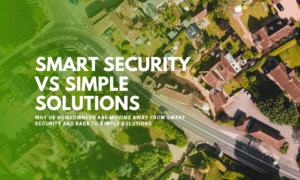Location intelligence data has become an essential tool for businesses, governments, and organizations across various industries. By leveraging geospatial data, companies can gain valuable insights into consumer behavior, optimize operations, and make informed decisions. As technology continues to evolve, the future of location intelligence data is being shaped by advancements in artificial intelligence, real-time analytics, and new data collection methods. These innovations are transforming how businesses use geographic data, driving efficiency, accuracy, and deeper insights into the world around us.
One of the most significant trends in the future of location intelligence data is the integration of artificial intelligence (AI) and machine learning. AI is revolutionizing how location data is processed and analyzed, making it easier to identify patterns and trends that were previously difficult to detect. Machine learning algorithms can analyze vast amounts of geospatial data in real time, allowing businesses to make faster and more accurate decisions. For example, retailers can use AI-powered location intelligence to predict customer foot traffic, optimize store placement, and personalize marketing campaigns based on geographic trends. In urban planning, AI can help cities analyze traffic patterns, improve public transportation routes, and manage infrastructure more effectively.
Another key innovation shaping the future of location intelligence data is the rise of real-time geospatial analytics. Traditional location intelligence relied on historical data, but modern advancements now allow businesses to access and analyze location data as it happens. Real-time analytics enable organizations to respond immediately to changing conditions, such as traffic congestion, weather events, or shifts in consumer behavior. For example, logistics companies can optimize delivery routes dynamically based on live traffic data, reducing delays and fuel costs. Similarly, emergency response teams can use real-time location intelligence to coordinate faster and more effective disaster relief efforts.
The Internet of Things (IoT) and connected devices are also playing a crucial role in the future of location intelligence. As more devices become connected to the internet, the amount of location-based data being generated is increasing exponentially. IoT sensors in vehicles, smartphones, and smart city infrastructure provide continuous streams of location intelligence data, offering deeper insights into movement patterns and environmental conditions. In the transportation industry, IoT-enabled location tracking allows for improved fleet management, predictive maintenance, and more efficient route planning. In retail, IoT devices can help businesses understand customer movement within stores, leading to better store layouts and product placements.
Another exciting development in location intelligence is the use of satellite and aerial imagery for more detailed and accurate mapping. High-resolution satellite images and drone technology provide businesses with up-to-date geographic data that can be used for a variety of applications. In agriculture, satellite imagery helps farmers monitor crop health, optimize irrigation, and detect potential issues before they escalate. In real estate, aerial imagery allows developers and investors to assess land conditions, monitor construction progress, and analyze market trends. These advancements are making location intelligence more precise and valuable across multiple sectors.
The increased adoption of augmented reality (AR) and spatial computing is also transforming how location intelligence data is utilized. AR applications use real-world geographic data to overlay digital information onto a user’s surroundings, creating immersive and interactive experiences. For example, AR navigation apps use real-time location intelligence to provide step-by-step directions with visual cues, improving wayfinding in complex environments like airports, shopping malls, and urban centers. Businesses are also using AR-powered location intelligence for marketing purposes, such as placing virtual advertisements in high-traffic areas or creating location-based gaming experiences.
Privacy and data security concerns are becoming increasingly important in the future of location intelligence. As more companies collect and analyze location data, the need for transparent data practices and regulatory compliance is growing. Governments worldwide are implementing stricter data protection laws, such as the General Data Protection Regulation (GDPR) in Europe and the California Consumer Privacy Act (CCPA) in the U.S. Businesses must ensure they handle location data responsibly, obtain user consent, and implement strong security measures to protect sensitive information. The future of location intelligence will likely involve enhanced encryption technologies, anonymization techniques, and greater consumer control over personal location data.
The rise of 5G technology is another factor that will significantly impact the future of location intelligence data. 5G networks provide faster data speeds, lower latency, and improved connectivity, enabling more precise and real-time location tracking. This advancement is particularly beneficial for industries that rely on highly accurate location data, such as autonomous vehicles, smart cities, and real-time logistics. With 5G, self-driving cars can process location intelligence data more efficiently, improving navigation and safety. Smart city infrastructure can also benefit from enhanced location tracking, leading to better traffic management, energy efficiency, and urban planning.
Location intelligence data is also being used to drive advancements in predictive analytics and behavioral insights. By analyzing past location trends, businesses can forecast future movements and behaviors, allowing them to make proactive decisions. Retailers can use predictive location analytics to determine the best locations for new stores based on expected foot traffic and customer demographics. In finance, location intelligence can help assess market conditions and predict economic trends based on geographic data patterns. The ability to anticipate future developments based on location intelligence will be a game-changer for many industries.
As the demand for location intelligence continues to grow, businesses are investing in customized location intelligence solutions tailored to their specific needs. While general mapping services like Google Maps and Apple Maps provide valuable geographic data, many industries require specialized solutions that offer deeper insights and industry-specific applications. Companies are developing proprietary location intelligence platforms that integrate with their existing systems, providing more detailed analytics and actionable insights. This trend is making location intelligence more accessible and effective for businesses of all sizes.
The future of location intelligence data is full of exciting possibilities. Innovations in artificial intelligence, real-time analytics, IoT, satellite imagery, augmented reality, and 5G are driving new applications for location intelligence across industries. As businesses and governments continue to explore the potential of geospatial data, the demand for more accurate, efficient, and ethical location intelligence solutions will grow. Companies that leverage these advancements effectively will gain a competitive edge, improve operational efficiency, and enhance their ability to make data-driven decisions in an increasingly connected world. Location intelligence is no longer just about mapping—it is a powerful tool that is shaping the way we interact with and understand the world around us.































